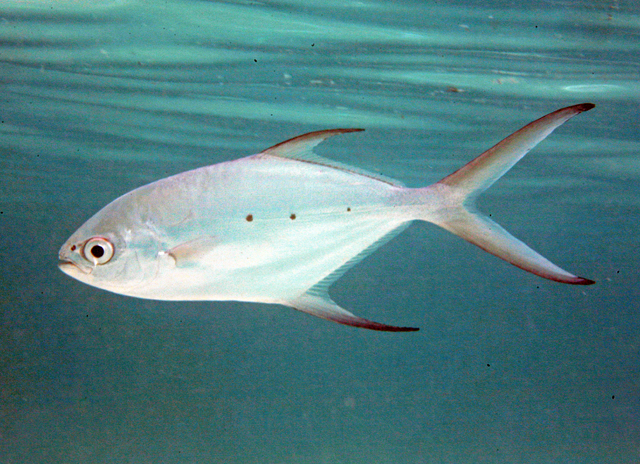| Carangidae (Jacks and pompanos), subfamily: Trachinotinae |
| 60 cm TL (male/unsexed); max.weight: 1,500.0 g |
|
reef-associated; brackish; marine; depth range 0 - 3 m |
| Indo-Pacific: Red Sea to the Line and Mangaréva islands, north to southern Japan, south to Lord Howe and Rapa. |
|
Dorsal spines (total): 7-7; Dorsal soft rays (total): 20-24; Anal spines: 3-3; Anal soft rays: 20-24. Description: Dorsal side silvery blue to grey, ventral side silvery white; spots 1-6 small black on or near LL but absent in specimens less than 15 cm, number of spots increasing with age (Ref. 3197, 90102). Body elongated or ovate, compressed strongly; profile dorsal and ventral convex equally. Snout blunt. Fins dorsal lobe shorter than and anal fin lobe than about 25 cm FL; both lobes elevated greatly. Caudal peduncle without grooves. (Ref. 90102) |
| Adults occur near surface waters of lagoon and seaward reefs, in surge zones along sandy beaches (Ref. 48635, 90102). They always move in schools at the edge of the surf near the reef, usually in pairs or small groups in surface waters (Ref. 48635). They feed on small fishes (Ref. 9710). They are occasionally taken by trolling and line fishing. |
|
Least Concern (LC); Date assessed: 09 March 2015 Ref. (130435)
|
| harmless |
|
Source and more info: www.fishbase.org. For personal, classroom, and other internal use only. Not for publication.

